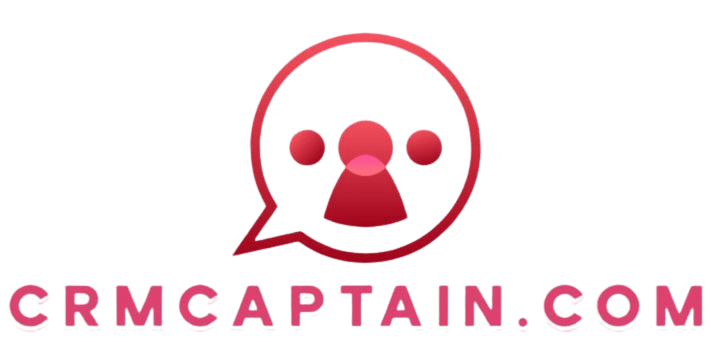Best Practices for CRM Custom Reports
Custom reports serve as an invaluable asset for any organization eager to fully leverage their data.
This article delves into the concept of custom reports and many benefits they provide, from enhancing efficiency to elevating data analysis. You ll find a comprehensive step-by-step guide to crafting custom reports, alongside best practices for design and insightful tips on interpreting and using these reports for more informed, data-driven decisions.
We ll also shine a light on common pitfalls to sidestep, ensuring your reports are not just effective but also free of errors.
Dive into the world of custom reporting and discover how it can revolutionize your data analysis!
Contents
- Key Takeaways:
- Benefits of Using Custom Reports
- Creating Custom Reports
- Best Practices for Designing Custom Reports
- Interpreting and Utilizing Custom Reports
- Common Mistakes to Avoid
- Frequently Asked Questions
- What are the best practices for creating custom reports in a CRM system?
- Why is it important to regularly review and update custom reports in a CRM system?
- How can I ensure that my custom reports are user-friendly and easy to understand?
- Are there any common mistakes to avoid when creating custom reports in a CRM system?
- How can I ensure the security of my custom reports in a CRM system?
- Can I schedule automatic delivery of custom reports to specific users?
Key Takeaways:

Custom reports provide efficiency and in-depth data analysis for businesses.
Designing custom reports requires careful consideration of layout, filters, and sorting for optimal use, and following the best practices for CRM customization and optimization can enhance this process.
Interpreting and utilizing custom reports can lead to data-driven decision-making, and avoiding common mistakes can ensure error-free reports.
What are Custom Reports?
Custom reports are your go-to tools, crafted using Customer Relationship Management (CRM) software to deliver a comprehensive analysis of customer data, performance metrics, and sales cycles. For effective management, it’s essential to follow best practices for CRM data backups. These reports enable you to visualize trends, track engagement rates, and extract valuable insights that inform your decision-making processes.
Utilizing platforms like Zoho CRM and Salesforce allows you to tailor your reports to match your unique goals and operational needs. This enhances customer engagement and drives profitability.
You can analyze your data through various reporting formats, giving you the flexibility to manipulate and present information in visually appealing ways.
Thanks to automation features, generating these reports becomes a breeze, saving you precious time and resources. You also have user settings at your disposal, allowing you to monitor campaign performance and adjust your strategies in real-time based on the insights you gather.
This capability lets you spot growth opportunities quickly. It ensures that you can swiftly adapt to changing market dynamics and customer preferences, ultimately leading to greater operational efficiency.
Benefits of Using Custom Reports
Utilizing custom reports provides you with many advantages as you seek to elevate your data analysis capabilities and enhance operational efficiency.
These tailored reports offer insights specifically designed to enrich your understanding. This ultimately fosters improved customer engagement, well-considered choices, and optimized performance metrics.
By harnessing automation and effective CRM tools, you can streamline your reporting processes, uncover revenue opportunities, and substantially boost your reporting efficiency.
Efficiency and Data Analysis
Improving efficiency and data analysis through custom reports is vital if you’re aiming for deeper insights into your customer engagement strategies and performance metrics.
By utilizing CRM systems, you can streamline your data, granting real-time access to essential metrics that inform your decision-making.
When you leverage tailored reporting, you can meticulously track lead sources. This ensures you identify which channels are driving the highest profitability.
This specialized approach enhances data integrity and simplifies the reporting process, allowing your team to concentrate on insights instead of getting bogged down by manual data compilation.
With enhanced user settings, stakeholders can customize their dashboards for more personalized insights, paving the way for more efficient analyses. Ultimately, this combination enables your team to optimize strategies and elevate overall performance in an increasingly competitive landscape.
Creating Custom Reports
Creating custom reports requires a systematic approach to ensure that you capture the desired data accurately and present it effectively, following the best practices for CRM documentation using data visualization techniques.
By integrating various CRM tools, you can build dynamic dashboards that respond to real-time data inputs. This provides timely insights and facilitates adjustments in your strategic planning.
This process demands careful consideration of user needs and data sources, allowing you to maximize the effectiveness of your reporting.
Step-by-Step Guide

A step-by-step guide to creating custom reports in your CRM (Customer Relationship Management) can greatly enhance your ability to analyze customer data and track performance metrics accurately, especially when following best practices for utilizing CRM dashboards.
Start by clearly defining your specific goals and identifying the necessary data sources. Choose the right reporting tools to extract valuable insights. This foundational process is crucial for crafting reports tailored to your unique business needs.
Ask yourself which performance metrics are essential. Consider how these metrics will inform your decisions. Once your goals are set, gather accurate and comprehensive data from various channels. Identify the key data points that contribute to meaningful analysis.
After collecting the data, focus on formatting. Aim for a design that presents your findings in a user-friendly manner. This will enable stakeholders to quickly interpret results and draw actionable conclusions.
Best Practices for Designing Custom Reports
Design your custom reports to be informative and easy to use. Following the best practices for CRM technical support can make them visually appealing and effective.
Prioritize an effective layout and use clear ways to show data. This significantly enhances user engagement and amplifies the impact of the insights you share.
This thoughtful approach leads to better choices and helps you uncover growth opportunities hidden within the data.
Considerations for Layout and Formatting
Paying attention to layout and formatting is crucial for maintaining data integrity and visual appeal. A well-structured report boosts readability and helps extract insights, allowing for a deeper engagement with the content.
Incorporate elements like charts and graphs to enhance metrics tracking. These provide a clear visual representation of data trends. Use clear headings to guide readers through the report, enabling quick access to relevant information.
Utilizing white space improves readability, making the overall presentation less cluttered and more inviting. Strategic color coding can highlight critical data points, enhancing reporting efficiency and comprehension.
By combining these techniques, you can improve the usability of your custom reports. This ultimately leads to better decision-making based on the information presented, especially when following best practices in CRM data management.
Using Filters and Sorting
Utilizing filters and sorting techniques in your custom reports allows for a refined approach to data analysis and targeted insights. By applying specific criteria, you can streamline the information displayed and focus on the most relevant metrics.
For example, a marketer may filter data to analyze customer engagement rates over a specific period. This helps in understanding seasonal trends and assessing recent campaigns’ effectiveness. By sorting this data by demographics, they can identify customer segments with the highest engagement levels. This enables tailored outreach efforts.
Your performance analysis can also improve when key performance indicators are sorted by different regions. This reveals areas that need enhancement. Such targeted insights not only aid in strategic planning but also optimize resource allocation, ensuring efforts are directed where they yield the best results.
Interpreting and Utilizing Custom Reports
Interpreting and leveraging custom reports is vital for any organization aiming to make data-driven decisions and enhance performance analysis.
By effectively analyzing insights from these reports, you can uncover trends, optimize your campaigns, and refine your customer engagement strategies. This ultimately drives your business forward.
Making Data-Driven Decisions

Making choices based on facts and figures is essential for leveraging custom reports that enhance your business performance and customer engagement strategies. By diving into the insights these reports offer, you can effectively align your goals and marketing campaigns with your customers’ needs.
Consider a retail company that used its CRM system to generate tailored sales reports showcasing customer buying patterns. This enabled them to implement targeted promotions, resulting in a remarkable 20% boost in sales.
Using automation tools helps you track customer interactions and preferences easily, allowing for timely follow-ups that significantly improve customer retention rates.
These customized insights not only streamline your marketing efforts but also enhance profitability by ensuring that resources are allocated efficiently. When data trends are analyzed regularly, companies often see a marked improvement in forecasting and strategic planning, directly contributing to their overarching success.
Common Mistakes to Avoid
Being mindful of common mistakes when crafting custom reports can greatly elevate your data analysis and reporting efficiency, especially when you follow the best practices for CRM data backup.
Neglecting data integrity, failing to tailor reports to user needs, and overlooking crucial performance metrics can significantly diminish the value of the insights gleaned from these reports.
By addressing these pitfalls, you enhance not only the effectiveness of your analysis but also the overall impact of your reporting efforts.
Tips for Error-Free Reports
Ensuring your custom reports are error-free is crucial for maintaining data accuracy and delivering reliable insights. By adopting specific strategies, you can learn how to create CRM software reports that meet user expectations and contribute to well-considered choices.
To get started, double-check your data sources to ensure the information is relevant and up-to-date. It s equally important to validate metrics, ensuring that calculations accurately reflect your findings while remaining user-friendly.
Don t ignore consistency in formatting; it significantly enhances the overall readability and professionalism of your reports. Leveraging integration tools can also streamline the process, making data gathering less cumbersome and more reliable.
By implementing these practical practices, you can transform what might seem like a mundane task into an efficient, insight-driven reporting experience.
Frequently Asked Questions
What are the best practices for creating custom reports in a CRM system?
The following are some important best practices to consider when creating custom reports in CRM systems: – Clearly define the report’s purpose and objectives. – Identify key data and metrics to include. – Use a consistent format and design for all reports. – Regularly update reports for accuracy. – Train users on how to access and use the reports effectively.
Why is it important to regularly review and update custom reports in a CRM system?

Regular review and updates are crucial to ensure that reports remain accurate, relevant, and useful. As business needs and processes change, reports may need modification to reflect these changes and provide valuable insights. This will also help avoid using outdated or irrelevant data in decision-making.
How can I ensure that my custom reports are user-friendly and easy to understand?
To make custom reports user-friendly and easy to understand, consider the following tips:
– Use clear and concise language.
– Utilize visual aids such as charts and graphs.
– Include a legend or key for any symbols or abbreviations used.
– Use consistent formatting throughout the report.
– Provide explanations or definitions of any technical terms.
Are there any common mistakes to avoid when creating custom reports in a CRM system?
Yes, there are common mistakes to avoid. These include:
- Including unnecessary or irrelevant data.
- Not clearly defining the report s purpose and objectives.
- Overlooking the end-user’s needs and understanding.
- Using inconsistent formatting or design.
- Neglecting to regularly review and update the reports.
How can I ensure the security of my custom reports in a CRM system?
Ensuring the security of custom reports is crucial to protect sensitive data. Here are some best practices for CRM software configuration strategies:
- Limit access to only authorized users.
- Implement measures to verify users identities and control access.
- Encrypt sensitive data in the reports.
- Regularly monitor and check reports for unauthorized access.
Can I schedule automatic delivery of custom reports to specific users?
Yes, many CRM systems let you schedule automatic delivery of custom reports. This saves time and ensures reports reach the right people at the right time!






